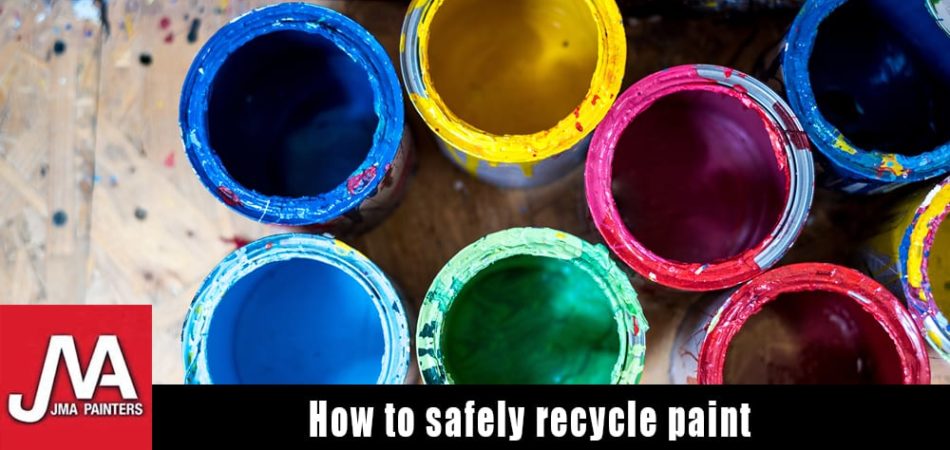
Lafayette 337-329-8445
New Orleans 504-229-2083

Lafayette 337-329-8445
New Orleans 504-229-2083

Most people run into a home improvement project that involves painting several times throughout their lives. Unfortunately, most do not know how to properly recycle paint so it either sits in your garage for years upon years or is improperly disposed of contributing to further environmental damage. Paints contain hazardous chemicals that contaminate the land leading to pollution if they end up in landfills or down the drain. So what do you do with your leftover paint?
There are many options to properly recycle paint, but always check the local laws in your area to ensure you remain compliant. Also keep in mind that even if it’s legal to dispose of paint a certain way does not mean that is what is best for the environment. Below are a few options to consider.
Certain types of paint such as latex can be dried out and disposed of with your regular trash. Depending on how much paint is left over, you can simply remove the lid and leave in the sun for a day or so to fully dry it out. If there is a lot of paint left over, you can mix it with other substances that will help to dry it out such as kitty litter. Oil based paints should never be disposed of in regular trash pick ups and is actually illegal in a lot of areas. Although drying out and throwing away is likely the most convenient method for you, it is not always the best option. There are other options that not only ensure environmental safety but will help others out too!
You would be surprised by the amount of non profit organizations, schools, shelters, or even friends and family members that would to be the recipient of your recycled paint for their own projects. Paint is not always cheap so shelters and other organizations that have to be wise with how funds are spent have plenty of projects in mind that simply can’t take place without donations. While small amounts of paint may not seem like much help, it can always be mixed with other colors, or be used for smaller projects like classroom desks. There is also the option to donate paints back to paint stores so they can properly recycle paint for you. There are typically requirements on what will be accepted, if any depending on your area. So before you chunk it, make a few phone calls first!
Communities have systems in place to manage the amount of Hazardous waste gets pumped out into the environment. A simple google search for “hazardous waste pick up near me” will reveal the next drop off place and date for your area. Typically twice a year, more frequently in certain areas, there are organized drop offs put in place to dispose of hazardous waste such as batteries, chemicals, gasoline, and paint! Check with your local community to see when the next pick up date is and add it to your calendar!
Paint has a very long shelf life and you never know when you may need it. Consider storing your paint for touch ups or other projects that may arise in the future. Doing so may save you some money in the long run.
Reduce your need for proper paint disposal decisions by minimizing the amount of paint you have left over. Always get a proper quote on your project before you begin so you purchase the appropriate amount of paint. Some other factors include proper equipment and proper storage. The proper paint brushes for your size, material, and texture of your project will limit the number of coats necessary thus minimizing the amount of paint you need to begin with. Properly storing leftover paint will ensure it lives a proper shelf life and doesn’t need to be thrown out before being used again. The best way to make sure you get the correct amount of paint for the job and have zero leftovers to worry about is to hire a professional painter! Professional painters have many means and relationships for proper paint disposal on their end when needed so you can always leave it to the pros. If you are interested in a commercial or residential paint contractor, contact JMA for your paint project estimate today.